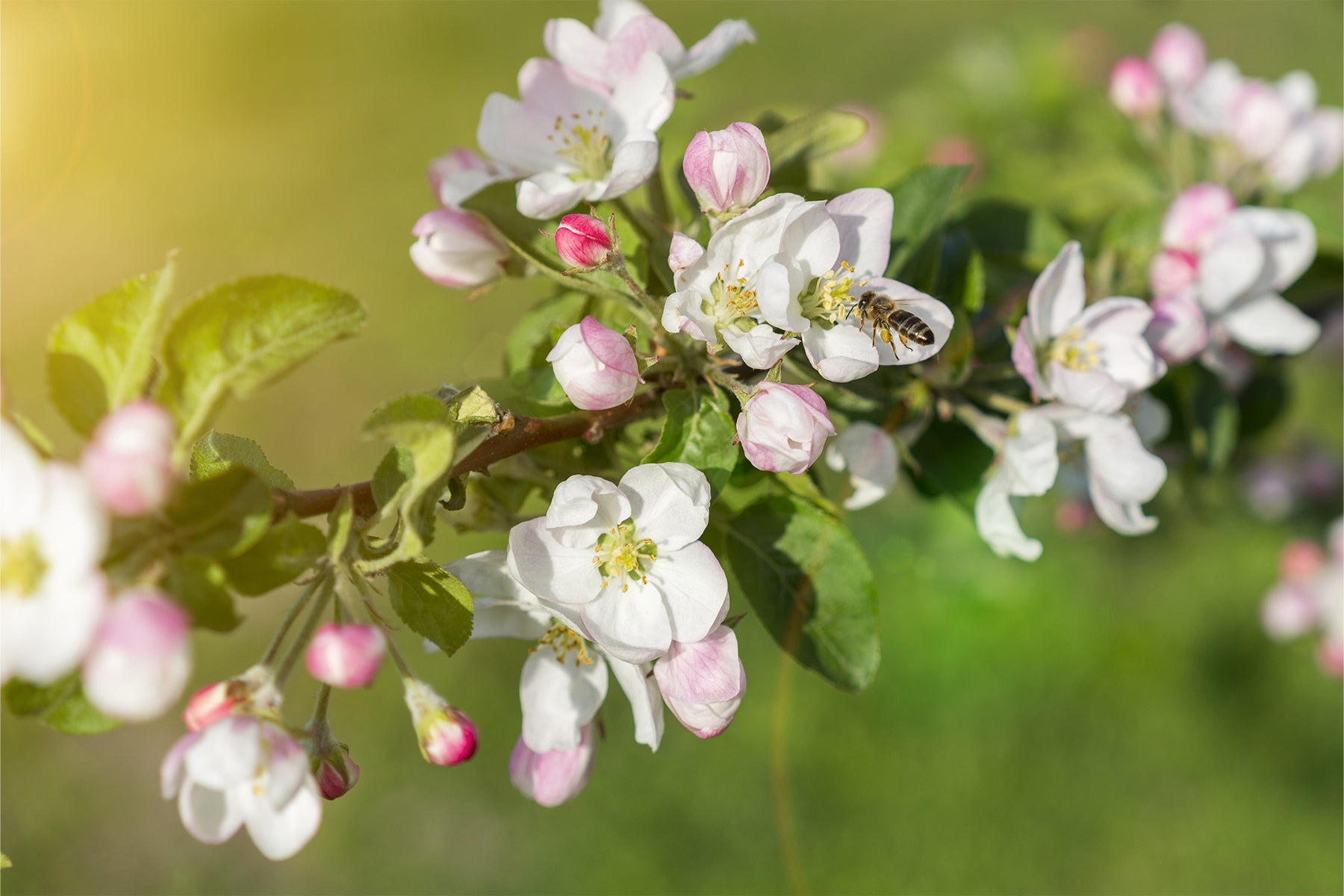If you are considering buying fruit trees, it helps to learn a little bit about pollination requirements for the type of tree you wish to purchase. Here are a few helpful facts and tips regarding the pollination of fruit trees.
Without pollination, your beautiful fruit trees will not produce a bounty of delicious edibles. Some fruit trees are self-pollinating or self-fruitful while others are non-self-fruitful. Self-pollinating fruit trees are those which do not need another type of tree nearby in order to complete the process of pollination. Cherry trees and peach trees are two types of fruit trees in this category.
Fruit trees, either container tree or bare root trees, that are not self-pollinating will need to be pollinated by another variety of tree. Apple trees and pear trees are two types of non-self-fruitful or non-self-pollinating trees.
When it comes to fruit trees, it is important to note that some types of self-pollinating trees experience a higher level of success when they are cross-pollinated with another tree. We always recommend that you purchase these self-fruitful trees in pairs, as you tend to enjoy greater fruit production.
But what does all this mean? How does one ensure proper pollination? All you really need to do is select the type of tree that you want and then do some research and find out which trees are compatible for cross-pollination. Part of this compatibility includes finding two types of trees that bloom around the same time of year. This is especially important if you are planting just two fruit trees. When planting the two trees or several trees, it is important to plant the trees at least 15- 20 feet apart, as this allows for optimum pollination.
Among our selection, some of our self-pollinating fruit trees include peach trees, European plums, figs and persimmons. Again, it is wise to buy a twin for your fruit tree to improve fruit yield.
Our non-self-pollinating fruit trees include apple trees, pear trees, hybrid plum trees and blueberries. For any of these fruit trees, you will need to also purchase a compatible pollinator.
For instance, crabapple trees would be an excellent choice as a pollinator if you were planting just about any variety of apple trees. If you prefer not to plant crabapples, you can cross-pollinate with another type of apple tree. For instance, if you wish to plant a Granny Smith apple tree, cross-pollinate this tree with a Gala tree or perhaps a Golden Delicious tree. It’s best to select two varieties that you particularly enjoy eating, of course, as well as two varieties that are compatible pollinators.
In addition to thinking about pollination when buying fruit trees and pecan trees, it is important to consider your climate and soil conditions. You will need to select varieties that thrive in your Plant Hardiness Zone. We have a large selection of fruit trees, so it should not be difficult to find some excellent options for your property.
It’s also important to consider your yard size and the eventual height of the fruit trees you plan to buy. Because many fruit trees need to be planted at least 50 feet away from each other, property size is quite important.
At Plant Me Green, you can find a wide variety of fruit trees, including container fruit trees and bare root trees. We have more than one dozen varieties of apple trees as well as crabapple trees, pear trees, fig trees, persimmon trees and peach trees. In addition, we also sell blueberries, blackberries, and grapes. We even have pawpaw fruit trees, which produce a delectable fruit that some say tastes like a banana, while others say it tastes like a cross between a mango and a banana.
Take a look at our selection, and if you have any questions about fruit trees, container trees or bare root trees, don’t hesitate to give us a call or send us an email.


Comments
My friend planted a Saturn peach about 20 ft from another unknown variety of peach now the Saturn peaches are round like the other variety instead of flat like they’re supposed to be is it because of cross pollination